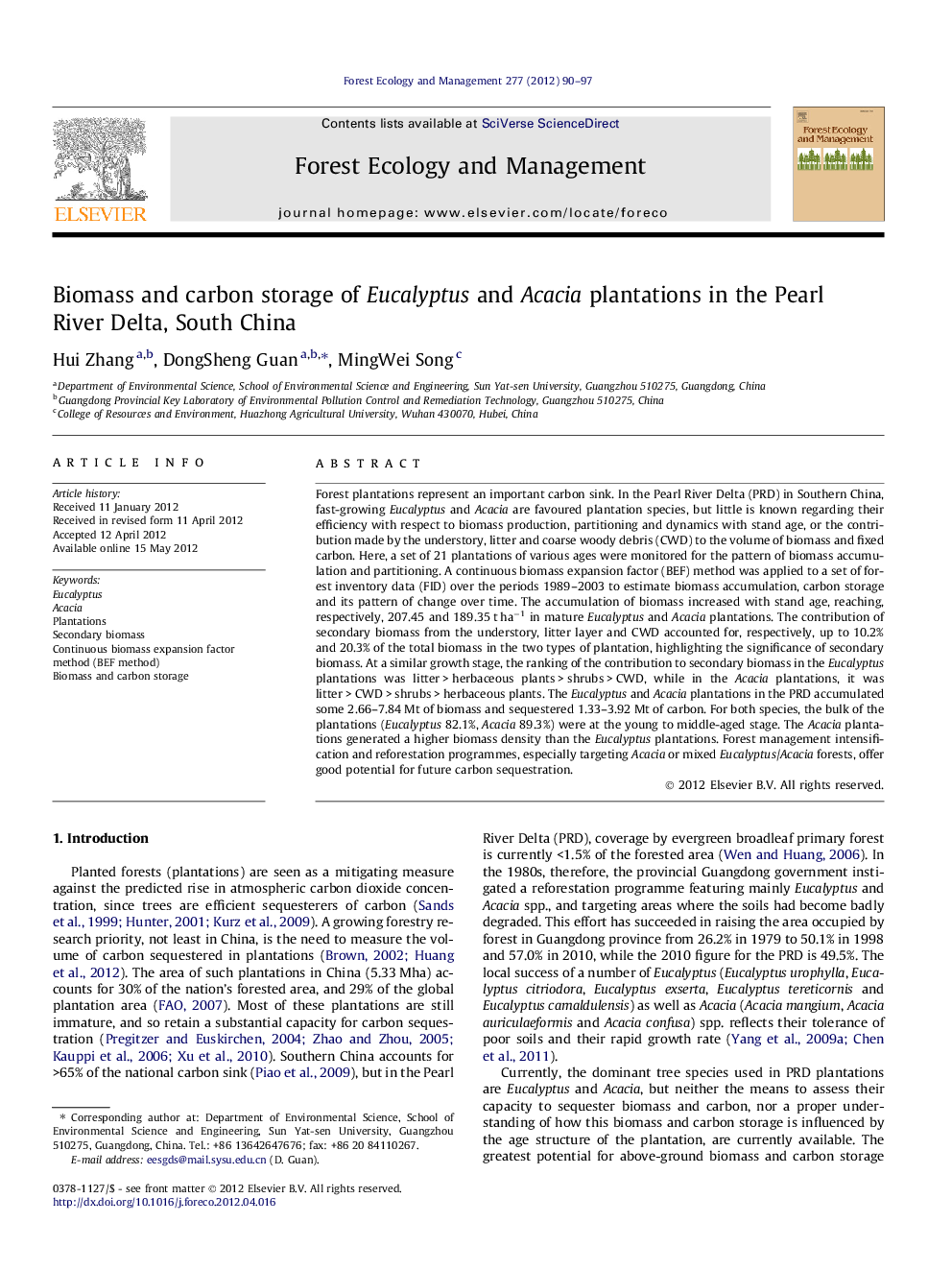| Article ID | Journal | Published Year | Pages | File Type |
|---|---|---|---|---|
| 87221 | Forest Ecology and Management | 2012 | 8 Pages |
Forest plantations represent an important carbon sink. In the Pearl River Delta (PRD) in Southern China, fast-growing Eucalyptus and Acacia are favoured plantation species, but little is known regarding their efficiency with respect to biomass production, partitioning and dynamics with stand age, or the contribution made by the understory, litter and coarse woody debris (CWD) to the volume of biomass and fixed carbon. Here, a set of 21 plantations of various ages were monitored for the pattern of biomass accumulation and partitioning. A continuous biomass expansion factor (BEF) method was applied to a set of forest inventory data (FID) over the periods 1989–2003 to estimate biomass accumulation, carbon storage and its pattern of change over time. The accumulation of biomass increased with stand age, reaching, respectively, 207.45 and 189.35 t ha−1 in mature Eucalyptus and Acacia plantations. The contribution of secondary biomass from the understory, litter layer and CWD accounted for, respectively, up to 10.2% and 20.3% of the total biomass in the two types of plantation, highlighting the significance of secondary biomass. At a similar growth stage, the ranking of the contribution to secondary biomass in the Eucalyptus plantations was litter > herbaceous plants > shrubs > CWD, while in the Acacia plantations, it was litter > CWD > shrubs > herbaceous plants. The Eucalyptus and Acacia plantations in the PRD accumulated some 2.66–7.84 Mt of biomass and sequestered 1.33–3.92 Mt of carbon. For both species, the bulk of the plantations (Eucalyptus 82.1%, Acacia 89.3%) were at the young to middle-aged stage. The Acacia plantations generated a higher biomass density than the Eucalyptus plantations. Forest management intensification and reforestation programmes, especially targeting Acacia or mixed Eucalyptus/Acacia forests, offer good potential for future carbon sequestration.
► Eucalyptus and Acacia plantations showed a high potential to sequester biomass and carbon in the Pearl River delta. ► The capacity of Acacia to sequester carbon was higher than that of Eucalyptus. ► The understory, litter and coarse woody debris contributed significantly to the biomass of plantation ecosystem. ► The biomass expansion factor (BEF) concept was extended to cover Eucalyptus plantations at a regional level. ► The continuos BEF method applicable to Acacia plantations was developed.
